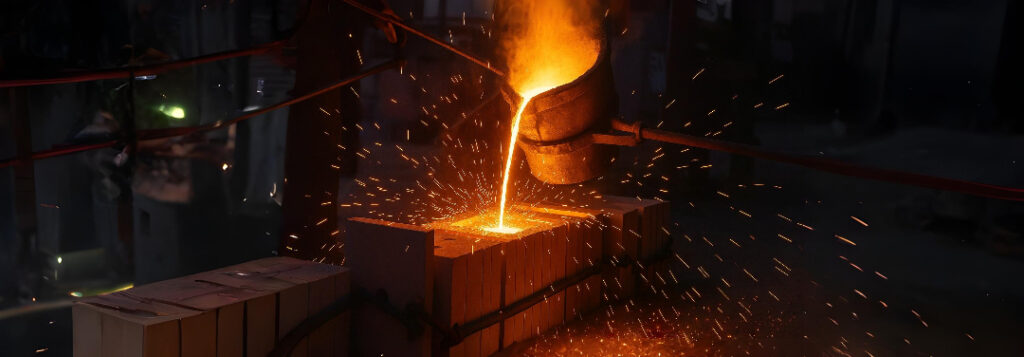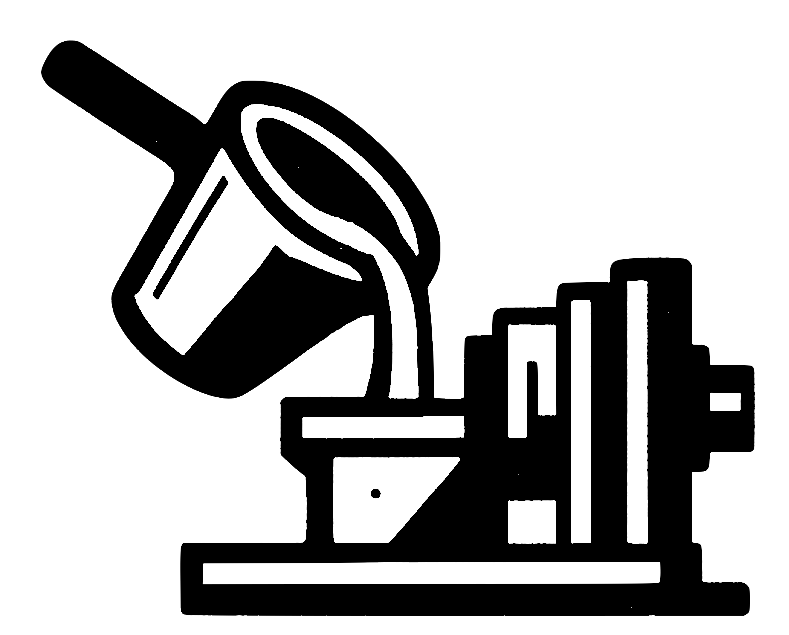
Critical Pour Height Uncovered
Introduction
Critical pour height may be the simplest casting variable to overlook, yet it quietly dictates surface integrity, bifilm formation and, ultimately, fatigue life. Whenever liquid aluminium drops farther than its modest 12 mm limit, the falling jet rolls its own oxide into the melt, sowing planar cracks long before solidification begins. Operators often chase degassing or alloy tweaks, unaware that a five‑centimetre ladle lip can defeat all their efforts. This article explains the physics behind the 12 mm threshold, shows how other alloys compare, and offers practical ladling and runner strategies that guarantee every drop lands defect‑free.
Why Height Matters More Than Flow Rate
When metal falls, potential energy converts to kinetic energy. At roughly 12 mm, aluminium acquires enough speed to fold its surface skin inward. Calculated via the Weber number (We = ρv2L/σ), the transition appears where We exceeds two, matching the criterion for surface break‑up. A short, smooth meniscus slide keeps We below this trigger even if the volumetric flow rate is high, proving height is the real enemy. Magnesium, with lower density and surface tension, suffers a similar limit. Ferrous melts, heavier but boasting higher surface tension, allow only 8 mm before oxide entrainment begins.
Laboratory Evidence for the 12 mm Rule
Controlled pour tests at 780 °C show a step‑rise in bifilm count once aluminium free‑falls beyond the 12 mm mark. Cast test bars poured from 20 mm exhibit a 35 % drop in fatigue life compared with 8 mm pours [1]. X‑ray tomography maps every planar defect to the original jet impact zone, confirming cause and effect. Digital high‑speed images reveal a hollow, oxide‑sheathed “flow tube” forming in mid‑air, then collapsing into the bath—exactly what Campbell predicted decades ago.
Designing Ladles and Tundishes for Safe Heights
The fastest cure is a lip spout that kisses the sprue well, trimming drop to near zero. Where robot ladles prohibit close approach, an angled slide or ceramic chute lets metal glide rather than fall. In tilt furnaces, pour spouts should extend until the sheet of metal contacts the mold basin throughout the tilt sequence. Add level sensors to alert operators when melt recedes below a safe elevation, forcing a pause until the furnace refills.
Sprue Wells and Bottom‑Pour Designs
A deep sprue well converts vertical fall into horizontal flow. Design wells at least twice the stream diameter and sloped toward the runner. Better yet, adopt bottom‑pour crucibles. These fill upward, eliminating a free surface entirely. Foundries converting to bottom‑pour systems report scrap reductions of 20 % without cycle‑time penalties [2].
Integrating Filters and Vortex Breakers
If some fall is unavoidable, position a ceramic‑foam filter just below the impact point. The filter arrests flow‑tube fragments and calms velocity before the metal reaches the runner. Vortex breakers—simple cross‑bars in the well—disperse kinetic energy, reducing local Weber numbers. Combine both and you regain a safety margin equivalent to removing 5 mm of drop.
Real‑Time Monitoring and Continuous Improvement
Infrared cameras stationed over the sprue detect splashes produced by hidden drops. When the system flags a bright spike, operators check ladle height and adjust immediately. Data logging links every shot to its drop profile, letting quality engineers correlate heights with X‑ray scrap. Over weeks, the plant trims average pour height by 4 mm, cutting defect claims in half.
Conclusion
Critical pour height is a low‑tech variable with high‑value payback. Keep aluminium drops under 12 mm, design hardware that enforces this limit, and monitor every ladle movement. Filters, wells and bottom‑pours offer extra insurance, but nothing beats a short fall. Respect this modest dimension and watch oxide‑related scrap fade, tensile scatter shrink and customer confidence climb.
References
- Lee GH, Park JY, Kim SJ. Influence of pouring height on bifilm density and fatigue life in Al‑7Si‑Mg castings. Int J Metalcast. 2023;17(4):556‑565. Available from: https://link.springer.com/article/10.1007/s40962-022-01401-3
- Müller T, Heidenreich J. Bottom‑pour retrofit eliminates entrainment defects in aluminium wheels. Metals. 2024;14(8):1633. Available from: https://www.mdpi.com/2075-4701/14/8/1633
